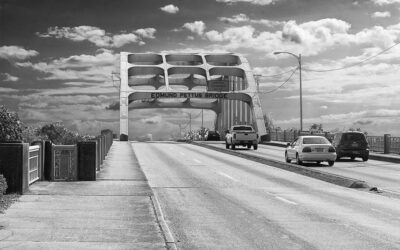Drive through Ireland to see a series of picture postcard views of its cities, towns, “emerald fields” and rugged coast. Ireland is a wonderful country to visit, with warm and caring people. On a recent trip there, my wife and I were made welcome at every stop.
I think the only way to see Ireland well and experience it is to drive through it, and that’s exactly what we did. After spending several days in Dublin, we spent the remainder of our time on a “road trip,” crossing much of the Republic of Ireland.
We were forewarned about Ireland’s many hedged, walled, winding and narrow roads which any Irish road trip driver will encounter. Yet, while our road trip was more than worth the difficulties of the roads, we had to throw out our driving timetable, as more often than not, road conditions were more difficult than expected. It took as long as twice our anticipated travel time to get to some destinations.
Ireland’s motorways (M on signs and maps) are like the limited access interstates of the US. When you can use them, driving times on them will be as expected.
The national roads’ (N) surface, width, shoulders, etc., vary widely and they can be very winding. While speed limits can run 50–100 kph, lower in towns and cities, it’s rare that one can actually drive close to the speed limit on them.
Regional roads (R) can often be counted on to be narrow — sometimes so narrow that cars must pull off to the side of the road to allow another to pass — and are often very winding. These roads can have sheep or cows crossing or walking down them at any time. While their speed limits typically are 50–80 kph, sometimes lower, it’s rare to be able to drive to the limit on these roads. Fortunately, travelers can generally stay off local roads (L), which are rarely much wider than a single lane for a truck and also often winding.
Here are my 10 tips for safe driving in Ireland to maximize your road trip experience there.
• When planning your Irish road trip, remember that road conditions are often such that the speed you can safely travel is far below the speed limit.
• Make sure you take “full” insurance (liability, collision, comprehensive, out of service) when renting a car in Ireland if your insurance from home or your credit card won’t provide full insurance for your road trip. I found it’s virtually impossible to drive through the country without incurring some scrapes and scratches while driving on its secondary (R & L) roads, thanks to the many hedges at the edge of the road which are pruned by the cars and trucks driving along them, noticeably scratching the cars’ paint.
• If you normally drive on the right you’ll have to raise your attention level significantly while driving in Ireland. It’s more than just driving on the left that’s different. Everything is reversed. Right turns go across traffic, not lefts. Traffic circles and roundabouts go clockwise, not counter-clockwise. To avoid a collision, you drive left, not right. Passing is on the right, not the left.
• Many regional and local roads have walls or hedges right at the edge of the road, up to several kilometers at a stretch, which don’t allow anyone to pull over. The hedges and walls often conceal hidden roads, drives and farm vehicle access. They make it hard to see oncoming traffic coming around a bend in the road. You’ll even find yourself periodically brushing against hedges to avoid cars and especially large trucks on the other side of the road. Be careful.
• Along national, regional and local roads you’ll regularly find sheep and cows crossing and walking along them. You must be prepared to stop for them at all times. The same is true for bicycles and pedestrians, which have no designated space along the side of the road.
• Slow trucks and farm tractors on regional and local roads, with no place to safely pass them for kilometer after kilometer, is part of Irish road trips. Don’t get impatient to reach your destination and pass them before it’s safe.
• Parked cars are often another road hazard you’ll need to avoid on Ireland’s roads. Far too often, Irish drivers park just about anywhere without regard to whether their car or truck sticks out into traffic, sometimes making two-lane roads into a single lane.
• Often, there are no erected road signs in Ireland, so you must be alert for lane and one-way road designations, stop signs and other important road markings painted on the roads themselves, which are hard to see when it’s raining.
• Don’t let your fuel get too low. Most, but not all, towns have a gas station, but there are few, if any, in between.
• A good GPS is invaluable in Ireland, as they will keep you headed in the right direction even when road signs are confusing.
Don’t count on using a smartphone as your GPS unless you’re using a GPS app with the entire road map of Ireland built in. Apps like Apple and Google Maps depend on a data stream to draw their maps, but we found there are more than a few locations in Ireland which had no cellular service at all, either voice or data. Plus, for many travelers, international cellular data use is expensive.
Get a paper map or two as a good backup under any circumstance.
(Image: Western end of the Dingle Peninsula, County Kerry, Ireland by Ned S. Levi – Copyright © 2014 NSL Photography, All Rights Reserved)
After many years working in corporate America as a chemical engineer, executive and eventually CFO of a multinational manufacturer, Ned founded a tech consulting company and later restarted NSL Photography, his photography business. Before entering the corporate world, Ned worked as a Public Health Engineer for the Philadelphia Department of Public Health. As a well known corporate, travel and wildlife photographer, Ned travels the world writing about travel and photography, as well as running photography workshops, seminars and photowalks. Visit Ned’s Photography Blog and Galleries.



